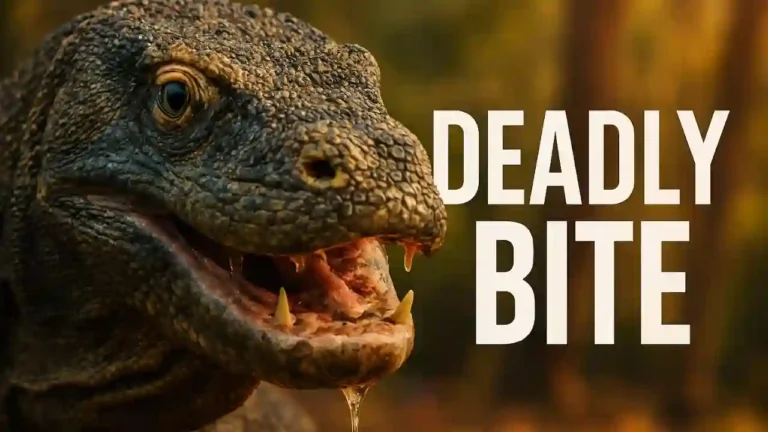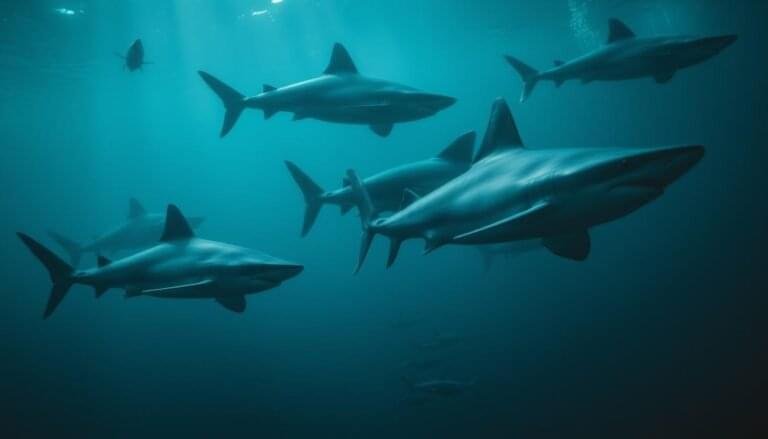Imagine a creature so powerful it can punch with a force of 1,500 newtons, faster than a bullet. Meet the Peacock Mantis Shrimp (Odontodactylus scyllarus), a marvel of marine biology. This tiny warrior, classified under Animalia and Arthropoda, has captivated me with its striking colors and extraordinary abilities.
What makes this species so remarkable? The Peacock Mantis Shrimp isn’t just a pretty face; it’s a powerhouse. Its vibrant hues and intricate patterns are just the beginning. With a punch that accelerates at 80 km/h, this shrimp can create cavitation bubbles that deliver a second shockwave, making it one of the most formidable predators in the ocean.
Delving deeper, this shrimp’s significance extends beyond its physical prowess. Its classification within the phylum Arthropoda and class Malacostraca highlights its unique evolutionary standing. The Peacock Mantis Shrimp’s ability to see a broader spectrum of colors and perceive polarized light, thanks to 16 types of photoreceptors, sets it apart from humans and other marine creatures.
In this article, I’ll share my journey of discovery and the fascinating research uncovering the secrets of the Peacock Mantis Shrimp. From its remarkable vision to its powerful strikes, we’ll explore what makes this species a standout in the marine world.
Key Takeaways
- The Peacock Mantis Shrimp can deliver punches with a force of 1,500 newtons, faster than a bullet.
- It possesses 16 types of photoreceptors, allowing it to see a broader spectrum and polarized light.
- This species is classified under Animalia and Arthropoda, with a unique evolutionary standing.
- Its vibrant colors and intricate patterns contribute to its striking appearance.
- The Peacock Mantis Shrimp is a formidable predator due to its powerful strikes and cavitation bubbles.
Introduction to the Peacock Mantis Shrimp
My fascination with the mantis shrimp began during a visit to a marine aquarium, where I first encountered this extraordinary creature. The vibrant colors and intriguing behavior of the Peacock Mantis Shrimp immediately captured my attention, sparking a desire to learn more about its unique characteristics and significance in the marine world.
My Journey to Discover This Fascinating Creature
As I delved into my research, I discovered the scientific classification of this species, Odontodactylus scyllarus, which belongs to the order Stomatopoda. This order comprises over 500 species, each with distinct traits. The Peacock Mantis Shrimp, however, stands out due to its striking appearance and formidable abilities.
One of the most remarkable aspects of this species is its eye structure, which boasts up to 16 types of photoreceptors. This advanced vision allows the mantis shrimp to perceive a wide spectrum of colors and even detect polarized light, a feature unparalleled in humans. Such biological marvels highlight the evolutionary uniqueness of this crustacean.
In addition to its visual prowess, the mantis shrimp’s body is equally impressive. Capable of delivering strikes with a force of 1,500 newtons, this tiny warrior can accelerate its claws at speeds of up to 51 miles per hour. This incredible power creates cavitation bubbles that produce a secondary shockwave, making it a formidable predator in its water habitat.
Understanding the mantis shrimp’s role in both its natural environment and captivity is crucial. While their beauty makes them popular in aquariums, their powerful nature poses challenges for hobbyists. This duality underscores the importance of responsible care and appreciation for these remarkable creatures.
As we explore deeper into the world of the Peacock Mantis Shrimp, we’ll uncover more fascinating details about its habitat, behavior, and the challenges it faces. This journey promises to reveal the intricate balance between its natural instincts and its appeal in captivity, offering insights into the wonders of marine biology.
Physical Characteristics and Stunning Coloration
The Peacock Mantis Shrimp is a marvel of nature, blending robust structure with vibrant hues. Its body, ranging from 3 to 18 cm in size, showcases a mix of strength and beauty.
Body Structure and Size
This shrimp’s body is built for power, with a sturdy exoskeleton that provides both protection and flexibility. The size variation among species allows them to thrive in diverse environments, from coral reefs to rocky crevices.
Vibrant Color Palette and Patterns
The Peacock Mantis Shrimp’s coloration is its most striking feature. Vivid orange legs, a green carapace, and intricate spots create a dazzling display. These colors aren’t just for show; they serve purposes like camouflage and communication, setting this species apart from other marine creatures.
Extraordinary Vision and Eye Structure
My fascination with the mantis shrimp’s compound eyes and extraordinary vision began during my deep dive into their unique characteristics. What captivated me most was their ability to perceive light in ways humans cannot, thanks to their remarkable eye structure.
Unique Photoreceptor Capabilities
The mantis shrimp’s eyes are equipped with up to 12 different photoreceptors, significantly more than the three types found in humans. This advanced vision allows them to detect circularly polarized light, a feature that enhances their ability to navigate and hunt in their underwater environment. Each eye operates independently, capable of rotating 90 degrees in all directions, providing an almost 360-degree field of vision.
Innovative Research Inspired by Their Eyes
Scientific research has been inspired by the mantis shrimp’s eye structure, particularly in the development of advanced optical technologies. Their ability to process light efficiently has led to innovations in fields such as hyperspectral imaging and even medical imaging devices. This research aims to replicate the mantis shrimp’s photoreceptor capabilities, potentially revolutionizing how we capture and process visual data.
Learning about the mantis shrimp’s extraordinary vision has profoundly changed my perspective on marine biology. Their unique eye structure not only highlights the diversity of life underwater but also showcases how nature can inspire technological advancements. This journey of discovery continues to uncover the fascinating ways in which the mantis shrimp’s biology influences engineering and beyond.
The Power behind Their Strike

The mantis shrimp’s ability to deliver devastating blows is a testament to its evolutionary excellence. This section delves into the remarkable mechanics and physics behind its powerful strikes.
Dactyl Club Mechanism and Composition
The mantis shrimp’s dactyl club is a masterpiece of biological engineering. Composed of layered hydroxyapatite and calcium carbonate, this club is both durable and lightweight, allowing for rapid movement and immense force upon impact.
Lightning-fast Impact Speeds
Recent studies reveal that the mantis shrimp can strike with speeds comparable to a .22 caliber bullet, reaching up to 50 miles per hour. This rapid motion generates an incredible force of 1,500 newtons, making it one of the most formidable predators in the ocean.
Cavitation and Energy Release Effects
The strike creates cavitation bubbles that collapse with a secondary shockwave, amplifying the destructive power. This phenomenon, known as cavitation, is a result of the club moving through water at such high speeds, creating areas of low pressure that release energy upon collapse.
| Feature | Measurement | Significance |
|---|---|---|
| Strike Force | 1,500 newtons | Equivalent to over 2,500 times the shrimp’s body weight |
| Strike Speed | 50 mph | Comparable to a .22 caliber bullet |
| Cavitation Effects | Secondary Shockwave | Increases damage to prey |
This combination of speed, force, and cavitation makes the mantis shrimp an apex predator in its habitat, capable of breaking through the shells of its prey with ease. The evolutionary design of its dactyl club ensures efficiency, making it a remarkable example of natural engineering.
Habitat and Ecology of the Species
The Peacock Mantis Shrimp thrives in vibrant coral reefs, where its striking colors blend seamlessly with the dynamic marine environment. These reefs provide the perfect setting for their burrowing behavior, a key aspect of their ecological niche.
Coral Reef Environments and Burrowing Behavior
Found in tropical and subtropical waters, this species inhabits coral reefs at depths ranging from 3 to 40 meters. Their U-shaped burrows, often dug near reef structures, serve as refuge and protection from predators.
The shrimp’s burrowing is crucial for their survival, allowing them to ambush prey and avoid danger. This behavior also contributes to the reef’s ecosystem by aerating the sediment, promoting biodiversity.
Environmental Conditions and Scientific Classification
Classified under the phylum Arthropoda and class Malacostraca, this species thrives in warm, clear waters. The ideal conditions include temperatures between 22°C and 28°C, typical of coral reef environments.
As part of the kingdom Animalia and family Odontodactylidae, their ecological role is significant. They prey on small invertebrates, maintaining the balance of the reef ecosystem.
Observing these creatures in their natural habitat reveals their territorial nature. Their burrows are meticulously maintained, reflecting their adaptability and resourcefulness in a competitive environment.
| Feature | Measurement | Significance |
|---|---|---|
| Habitat | Coral Reefs | Provides shelter and ambush points |
| Depth Range | 3-40 meters | Access to diverse microhabitats |
| Burrowing Behavior | U-shaped tunnels | Refuge and hunting strategy |
The Peacock Mantis Shrimp’s habitat and ecology highlight their importance in maintaining coral reef health, showcasing their adaptability and ecological significance.
Diet and Hunting Techniques
The feeding behavior of the mantis shrimp is as fascinating as its appearance. These formidable predators have evolved unique strategies to thrive in their underwater environment.
Preferred Prey and Feeding Habits
The mantis shrimp primarily preys on gastropods, crustaceans, and bivalves. Their diet consists of hard-shelled animals, which they crack open using their powerful claws. This feeding habit makes them essential in maintaining the balance of their ecosystem.
Hunting Strategies and Efficiency
Known for their rapid, repeated strikes, the mantis shrimp can deliver blows with incredible force. Their strategy often involves ambushing prey from their burrows, making them highly efficient hunters. This method not only ensures their survival but also highlights their role as key predators in the reef ecosystem.
| Feature | Measurement | Significance |
|---|---|---|
| Strike Force | 1,500 newtons | Cracks hard-shelled prey |
| Strike Speed | 50 mph | Comparable to a bullet |
| Prey Types | Gastropods, Crustaceans | Key ecosystem balance |
Witnessing these hunting techniques in nature documentaries and aquariums has deepened my appreciation for their efficiency and adaptability. Their role as both predators and ecological balancers underscores their importance in marine environments.
Peacock Mantis Shrimp in the Aquarium Trade
The allure of the peacock mantis shrimp in home aquariums is undeniable. Their vibrant colors and intriguing behavior make them a prized addition. However, keeping them comes with unique challenges that every aquarist should understand.
Balancing Beauty and the Risks of Captivity
While these shrimp are stunning, they are not for the faint of heart. Their powerful strikes can damage equipment, and their burrowing habits can harm live rock. In fact, there have been reports of broken glass tanks due to their relentless digging.
| Feature | Measurement | Significance |
|---|---|---|
| Aesthetic Appeal | Vibrant Colors | Attracts Aquarists |
| Risk of Damage | Broken Tanks | High Maintenance |
| Burrowing Behavior | Live Rock Damage | Habitat Destruction |
Despite the challenges, many aquarists find the peacock mantis shrimp rewarding. With proper care and a suitable environment, they can thrive. It’s crucial to balance their beauty with responsible care to ensure both the shrimp and the aquarium ecosystem remain healthy.
Fun Facts and Future Research

As I continue to uncover the wonders of the mantis shrimp, I’m amazed by how its biology is inspiring human innovation. This species has become a hotspot for scientific exploration, blending fascinating facts with cutting-edge applications.
Bionic Applications Inspired by Their Anatomy
Researchers are drawing inspiration from the mantis shrimp’s remarkable dactyl club and eye structure. The club’s unique composition is being studied to develop advanced materials for aerospace and protective gear. Similarly, their extraordinary vision is paving the way for innovations in medical imaging and optical technologies.
Surprising Discoveries in Recent Studies
Recent findings reveal that mantis shrimp can detect UV light and have a punch speed 50 times faster than a bullet. Their navigation skills, using polarized light, are being studied to improve human-made systems. These discoveries not only deepen our understanding of this species but also open doors to new technological advancements.
As research progresses, the mantis shrimp continues to surprise us. Its impact on both science and technology is undeniable, promising even more exciting revelations in the future.
Conclusion
Summarizing the key aspects of this remarkable marine creature, the peacock mantis shrimp stands out for its extraordinary speed, vibrant coloration, and unique predatory abilities. Classified under the kingdom Animalia, phylum Arthropoda, class Malacostraca, and family Odontodactylidae, this species showcases fascinating anatomical and behavioral traits.
Reflecting on my journey of discovery, I am captivated by how this tiny crustacean has inspired advancements in technology and deepened our understanding of marine ecosystems. Each section of this article has provided a comprehensive view of its habitat, physiology, and the broader impact of its biology.
As I conclude, I am reminded of the enduring mystery and beauty of this species. Its ability to thrive in coral reefs, combined with its remarkable eyesight and powerful strikes, continues to inspire both scientists and enthusiasts. I invite readers to delve deeper into the fascinating world of this extraordinary creature, exploring its many wonders and the lessons it holds for us all.
FAQ
What makes the peacock mantis shrimp such a unique predator in the water?
How does the peacock mantis shrimp’s eye structure differ from other animals?
Can peacock mantis shrimp be kept in a home aquarium?
What is the average size of a peacock mantis shrimp?
How fast can a peacock mantis shrimp strike its prey?
What kind of prey does the peacock mantis shrimp typically hunt?
Are peacock mantis shrimp considered intelligent animals?
How do peacock mantis shrimp protect themselves from predators?
Can peacock mantis shrimp be found in freshwater environments?
What inspires scientific research into the peacock mantis shrimp?
| Organization Name | URL |
|---|---|
| International Union for Conservation of Nature (IUCN) | https://www.iucnredlist.org |
| Great Barrier Reef Foundation | https://www.barrierreef.org/the-reef/animals/mantis-shrimp |
| Oceana | https://oceana.org/marine-life/peacock-mantis-shrimp/ |
| Discovery of Sound in the Sea (DOSITS) | https://dosits.org/galleries/audio-gallery/marine-invertebrates/mantis-shrimp/ |
| Monterey Bay Aquarium | https://www.montereybayaquarium.org/stories/meet-the-mantis-shrimp |







